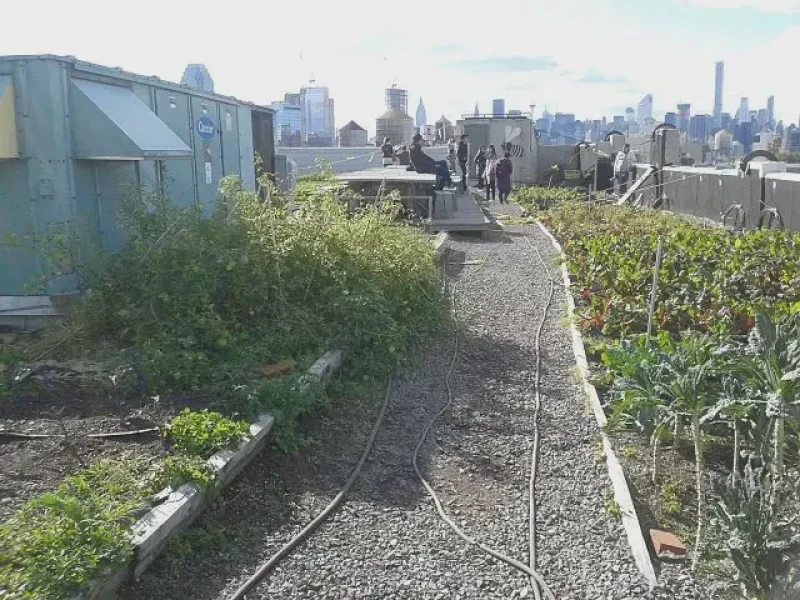Urban farming sounds great in theory — but releases more CO2 than conventional agriculture. Here’s what needs to change
Urban farming sounds great in theory — but releases more CO2 than conventional agriculture. Here’s what needs to change


A new study in Nature Cities compared carbon emissions from small farms and gardens in major cities across the U.S. and Europe with those of a typical industrial farm. The results may surprise many climate-conscious and well-meaning urbanites: per serving of produce, the carbon cost of low-tech urban farms can be up to six times greater than that of industrial farming operations. “We knew it would be high, but we didn’t realize it would be so high,” says study co-author Joshua Newell, a sustainable development researcher at the University of Michigan.
Newell’s team highlighted a number of ways to make urban agriculture more sustainable from a climate perspective. One option is to be selective about what crops are grown. Tomatoes grown in the city, for instance, have a carbon footprint equal to or lower than their industrially farmed counterparts. That’s because most commercially produced tomatoes start life in the greenhouse—a resource- and energy-intensive farming method. And a few other highly perishable crops that need to be refrigerated right away, such as asparagus and herbs, have about the same carbon footprint whether they’re grown in urban or industrial farm settings.
Another strategy is to rely on existing infrastructure as much as possible. Nearly two thirds of the carbon emissions from urban agriculture came from operations related to infrastructure, including the demolition and remodeling of old buildings rather than the incorporation of these structures into a new garden’s design.

 | Videos | More... |

Video: Nuclear energy will destroy us? Global warming is an existential threat? Chemicals are massacring bees? Donate to the Green Industrial Complex!
 | Bees & Pollinators | More... |

GLP podcast: Science journalism is a mess. Here’s how to fix it

Mosquito massacre: Can we safely tackle malaria with a CRISPR gene drive?

Are we facing an ‘Insect Apocalypse’ caused by ‘intensive, industrial’ farming and agricultural chemicals? The media say yes; Science says ‘no’
 | Infographics | More... |

Infographic: Global regulatory and health research agencies on whether glyphosate causes cancer
 | GMO FAQs | More... |

Why is there controversy over GMO foods but not GMO drugs?

How are GMOs labeled around the world?

How does genetic engineering differ from conventional breeding?
 | GLP Profiles | More... |

Alex Jones: Right-wing conspiracy theorist stokes fear of GMOs, pesticides to sell ‘health supplements’




 Viewpoint — Fact checking MAHA mythmakers: How wellness influencers and RFK, Jr. undermine American science and health
Viewpoint — Fact checking MAHA mythmakers: How wellness influencers and RFK, Jr. undermine American science and health Viewpoint: Video — Big Solar is gobbling up productive agricultural land and hurting farmers yet providing little energy or sustainabilty gains
Viewpoint: Video — Big Solar is gobbling up productive agricultural land and hurting farmers yet providing little energy or sustainabilty gains Fighting deforestation with CO2: Biotechnology breakthrough creates sustainable palm oil alternative for cosmetics
Fighting deforestation with CO2: Biotechnology breakthrough creates sustainable palm oil alternative for cosmetics Trust issues: What happens when therapists use ChatGPT?
Trust issues: What happens when therapists use ChatGPT? 30-year-old tomato line shows genetic resistance to devastating virus
30-year-old tomato line shows genetic resistance to devastating virus California, Washington, Oregon forge immunization alliance to safeguard vaccine access against federal undermining
California, Washington, Oregon forge immunization alliance to safeguard vaccine access against federal undermining The free-range chicken dilemma: Better for birds, but with substantial costs
The free-range chicken dilemma: Better for birds, but with substantial costs ‘You have to treat the brain first’: Rethinking chronic pain with Sanjay Gupta
‘You have to treat the brain first’: Rethinking chronic pain with Sanjay Gupta
